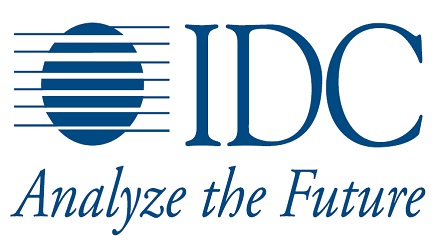E-Business
Holiday Promotions Jerk up EMEA Q4 PC Shipment to 2.0% – IDC

PC shipments in Europe, the Middle East, and Africa (EMEA) reached 25.5 million units in the fourth quarter of 2014, a 2.0% increase year on year, according to International Data Corporation (IDC).
Strong consumer demand during the holiday season helped keep the market at positive levels for the third consecutive quarter, albeit modest and patchy across the region, leading to 5.5% growth for 2014 with 93.3 million PCs shipped in EMEA.
Once again, there were strong regional differences in EMEA.
Western Europe continued to drive growth with shipments increasing 10.7%. In line with expectations, Central and Eastern Europe contracted 18.7%.
The Middle East and Africa (MEA) grew 2.6%.
The market was primarily driven by healthy consumer shipments in Western Europe. Vendors continued to stock up ahead of Christmas and January promotion sales, and before the February change to Bing promotions in mature markets excluding 15in. notebooks.
This resulted in portable PC shipments increasing 5.3% year on year in EMEA. As expected, desktop PC shipments contracted 3.5% during the quarter. Currency fluctuations have also had a strong impact in northern Europe, Russia, and other countries in Central and Eastern Europe, the Middle East, and Africa (CEMA), while an unstable political situation and macroeconomic weaknesses continued to inhibit investments in parts of the region.
The dynamics across EMEA reflect a strong need for renewals in the mature markets, while highlighting that emerging economies continue to struggle.
“The growth in Europe is a positive sign for manufacturers. Past quarters saw consolidation in the market with HP and Lenovo emerging stronger than before,” said Chrystelle Labesque, research manager, IDC EMEA Personal Computing.
In Western Europe, shipments for the holiday season and post-Christmas promotions underpinned the growth particularly in the consumer space. Central Europe did not see any major uplift, whereas France and the U.K. showed solid double-digit percentage growth. Southern Europe (Spain, Greece, Portugal, and Italy) has been on a recovery path after years of decline.
Promotions have been key to driving demand and boosting consumer portable PC shipments by 18.2% and consumer desktops by 13.2%.
The positive impact of the end of Windows XP support on desktops ended, which explained the 3.9% decline in commercial shipments.
In addition, pockets of inventory across the region led to a further drop in sell-in of business desktops.
As expected, commercial demand remained strong for portable PCs, which posted a 12.6% increase. Overall desktop shipment growth in Western Europe reached 1.6% and portable PCs 15.9%.
“PC manufacturers prepared very attractive consumer offers this Christmas, with low price points supported by Windows 8.1 with Bing edition, which enticed end users to renew their devices,” said Maciek Gornicki, senior research analyst, IDC EMEA Personal Computing. “With the conditions of the promotion about to change, inventories have been built up this quarter, contributing further to higher levels of stock in the supply chain, which might translate into deceleration in consumer shipments in the first half of 2015. In the commercial segment, the wave of desktop renewals following the end of Windows XP support ended abruptly, while refreshes of portable PCs related to the introduction of Windows 7 four years ago continued and kept the commercial portable market healthy.”
Stefania Lorenz, associate VP, IDC CEMA, said 2014 ended with the PC market in the CEE region contracting 14% year on year as 4Q followed the trends witnessed in the previous quarters, reporting an annual decrease of 18.7%.
“For the second consecutive year the CEE region contracted by double-digit units,” she said. “2014 was affected mostly by the events in the eastern part of the region. Devaluation of the currencies in Russia, Ukraine, and Kazakhstan has had the biggest impact on purchasing power. All other countries in the region reported healthy demand for the full year with double-digit growth.”
“The PC market in Central Europe reported overall year-on-year growth of 7.9% in 4Q driven by portable PCs,” said Nikolina Jurisic, product manager, IDC CEMA.
“Demand in the consumer space was driven by the continually attractive prices offered by MS Windows 8.1 plus Bing. The commercial sector recorded even stronger year-on-year growth as there is a clear need to replace the outdated installed base in addition to updates from XP operating systems.
“The MEA region recorded positive growth of 2.6% year on year, thanks to the stronger demand witnessed in Turkey and Saudi Arabia. While Saudi Arabia recovers after the introduction of a new labor law in 2013 that had negatively affected the market, expected changes in the import-tax law in Turkey at the beginning of 2015 have certainly contributed to additional electronic products being shipped into the country.”
Vendor Highlights
The top 3 players in EMEA account for more than half of the market and the top 5 for more than 70% following strategic decisions by Samsung and Sony to further invest in the region.
•HP outperformed the market and consolidated its share at more than 23% in EMEA. The vendor made strong gains particularly in the portable PC area with solid 29% growth, taking the lead in both product categories, despite a small contraction in desktop shipments. New products like Stream and convertibles were very prominent during the holiday season promotions.
•Lenovo maintained the strongest growth among the top players, continuously beating market expectations across EMEA and reaching almost 20% share in 4Q. It saw very significant growth in southern Europe (Italy, Spain, Greece, and Portugal).
•Dell grew faster than the market and consequently gained shares in EMEA. The vendor performed well in portable PCs and particularly in CEE. A consistent and strong strategy execution supported this.
•Acer recorded a softer performance, in part due to an unfavorable year-on-year comparison. Results in Western Europe were better than in the other subregions. Desktop shipments grew slightly while the vendor increased its focus on tablets.
•ASUS continued to grow aggressively in the desktop market, albeit from a small base, while the success in the tablet market seems to have come at the expense of portable PC shipments, which contracted slightly.
Outside the top 5 vendors, Apple ranked sixth, benefiting from stronger consumer demand. Toshiba’s stronger focus on the commercial market explains why it did not fully leverage consumer trends.
Fujitsu’s focus on commercial led to a decline due to the slowdown in the overall business segment. MSI was in ninth place and Wortmann was 10th.
E-Business
Cyberattacks: ‘56 Percent of Cases Stem from Existing Logins

A new report by Sophos, ybersecurity firm, has said that attackers primarily gained initial network access—56 per cent of all MDR and IR cases—by exploiting external remote services like firewalls and VPNs using valid credentials.

The 2025 Sophos Active Adversary Report details attacker behavior and techniques from over 400 Managed Detection and Response [MDR] and Incident Response [IR] cases in 2024.
According to the report, the combination of external remote services and valid accounts align with the top root causes of attacks.
For the second year in row, compromised credentials were the number one root cause of attacks [41% of cases]. This was followed by exploited vulnerabilities [21.79%] and brute force attacks [21.07%].
When analysing MDR and IR investigations, the Sophos X-Ops team looked specifically at ransomware, data exfiltration, and data extortion cases to identify how fast attackers progressed through the stages of an attack within an organisation.
In those three types of cases, the median time between the start of an attack and exfiltration was only 72.98 hours [3.04 days]. Furthermore, there was only a median of 2.7 hours from exfiltration to attack detection.
“Passive security is no longer enough. While prevention is essential, rapid response is critical. Organisations must actively monitor networks and act swiftly against observed telemetry.
Coordinated attacks by motivated adversaries require a coordinated defense. “For many organisations, that means combining business-specific knowledge with expert-led detection and response.
Our report confirms that organizations with proactive monitoring detect attacks faster and experience better outcomes,” said John Shier, field CISO.
The 2025 Sophos Active Adversary Report further reveals that attackers can move quickly, with a median of just 11 hours between initial access and a breach attempt on Active Directory, a critical asset in Windows environments.
Akira emerged as the most prevalent ransomware group in 2024, followed by Fog and LockBit, the latter still active despite a major takedown.
Attack detection has improved overall, with dwell time—the time attackers remain undetected—dropping from four days to just two, thanks largely to the inclusion of MDR (Managed Detection and Response) cases.
Dwell time varied depending on the type of case: it held steady at 4 days for ransomware and 11.5 days for non-ransomware cases in incident response (IR) investigations.
In contrast, MDR cases showed much faster response times—3 days for ransomware and just 1 day for non-ransom – ware attacks.
The report also highlights that 83% of ransomware deployments occurred outside local business hours, showing attackers favor overnight activity.
Additionally, Remote Desktop Protocol (RDP) was exploited in 84% of cases, making it the most commonly abused Microsoft tool.
To strengthen their cybersecurity posture, Sophos advises organizations to take several key steps.
First, they should close any exposed Remote Desktop Protocol (RDP) ports and implement phishing-resistant multifactor authentication (MFA) wherever feasible to reduce unauthorized access risks.
Additionally, companies should prioritize timely patching of vulnerable systems, especially those exposed to the internet. Deploying Endpoint Detection and Response (EDR) or Managed Detection and Response (MDR) solutions with 24/7 monitoring is crucial.
Finally, having a well-defined incident response plan—and regularly testing it through simulations or tabletop exercises—can greatly improve preparedness for potential attacks.
E-Business
Kaspersky Presents Insight on 14% Increase in Spyware Attacks on Businesses in Africa @ GITEX Africa

As part of the company’s participation at the GITEX Africa conference, taking place in Morocco on 14-16 April 2025, Kaspersky will address the dynamics for cyberthreats in the African region as per the latest anonymised data from the Kaspersky Security Network (KSN)¹.

From 2023 to 2024 businesses in Africa were targeted by web threats, on-device threats, and attacks aiming to steal data, including spyware and password stealers.
Phishing and ransomware continue to be significant threats in the region, with 66 million phishing link clicks seen by Kaspersky in the African region in 2024, including over 14.8 million phishing link clicks by corporate users.
Web-based threats, or online threats, are a category of cybersecurity risks that may cause an undesirable event or action affecting users browsing the Internet.
According to Kaspersky data, there were 131 580 587 web threats detected in 2024 in the African region, including almost 20 million attack attempts in Kenya, almost 17 million in South Africa, and 12.6 million in Morocco. Businesses were targeted by web threats more often in 2024 than in 2023, with threat detections increasing by 1.2%.
Local (on device) threats include malware that is spread via removable USB drives, CDs and DVDs, or that initially makes way onto the computer in non-open form (for example, programs in complex installers, encrypted files, etc.).
According to Kaspersky telemetry, local (on device) threat detections in organisations in the African region in 2024 increased by 4% compared to 2023. Among the countries that saw growth in local threats detected in organisations were Nigeria (169% increase), Ethiopia (86%), South Africa (32%), Senegal (11%), and Morocco (9%).
There has been a spike of threats related to data theft. According to Kaspersky data, there was a 14% growth in spyware attack detections on businesses in the African region from 2023 to 2024.
Spyware is secretly installed on a user’s computer to monitor their actions and collect their data. Apart from that, there has been a 26% increase in password stealer detections. Password stealers are a type of malware designed to harvest login credentials and other sensitive data.
“Our statistics show an increase in attack detections for several types of cyberthreats, and the factors driving these increases are multifaceted. In the B2B sector, the continuing shift toward hybrid work models and the rush to digitise operations — often outpacing cybersecurity investments — may leave businesses in Africa exposed to advanced persistent threats.
In the B2C space, the explosion of digital financial services, coupled with low digital literacy rates, makes individuals prime targets for opportunistic attacks,” comments Maher Yamout, Lead Cybersecurity Researcher with Kaspersky Global Research and Analysis Team.
“Organisations in Africa should prioritise a unified approach by enhancing collaboration, investing in specialised cybersecurity training, and promoting digital literacy to effectively combat the rising tide of cybercrime. Initiatives like the African Cyber Surge operation and targeted educational programs can serve as blueprints for building a resilient digital ecosystem across the continent.”
E-Business
Africa Plans to Establish a $60Bn AI Fund

A $60 billion Africa AI Fund is set to be established, leveraging public, private, and philanthropic capital. The goal is to build a secure, inclusive, and competitive African AI economy through foundational and catalytic investment, according to a declaration made at the recent Global AI Summit on Africa in Kigali, Rwanda.

The declaration seeks to leverage the potential of AI to drive innovation and competitiveness to advance Africa’s economies, industries, and societies. Second, to position Africa as a global leader in ethical, trustworthy, and inclusive AI adoption.
The declaration also seeks to foster the sustainable and responsible design, development, deployment, use, and governance of AI technologies in Africa.
The memorandum was facilitated by Qhala, Smart Africa, Rwanda’s Centre for the Fourth Industrial Revolution, and supported by the Gates Foundation.
Qhala is an AI enabler dedicated to driving innovation and digital transformation across Africa.
In a statement, Qhala said the declaration outlines shared commitment among African nations to align national strategies with continental goals, safeguard data sovereignty, build digital infrastructure, and foster a sustainable AI innovation ecosystem.
The organisation went on to say Africa’s AI landscape is changing at a fast pace and it is projected to contribute $2.9 trillion to the African economy by 2030.
Shikoh Gitau, CEO of Qhala, said: “This declaration is timely, as Africa’s AI ecosystem is rapidly evolving but remains fragmented and underfunded. This will ensure that Africa takes its place in a leadership role in global AI development.”
Lacina Koné, CEO of Smart Africa, added: “AI is not just technology to us, it’s an African arrow that, when thrown with the right ethical frameworks and inclusive policies, can pierce the way to African digital prosperity and resilience for the benefit of every citizen.”

 Broadcasting3 days ago
Broadcasting3 days agoStarlink, DStv, Others Pay “Peanuts” to Operate in Nigeria- Minister

 E-Financial3 days ago
E-Financial3 days agoNigeria to Exit Grey List Soon – SEC

 E-Business3 days ago
E-Business3 days agoReliance Infosystems Urges C-Suite Executives to Embrace AI

 E-Business3 days ago
E-Business3 days agoFG to Make Citizen Registration Mandatory under any Circumstance

 News3 days ago
News3 days agoZinox Technologies, TETFUND Collaborate for Tech-Driven Sustainable Future in Tertiary Schools

 General News2 days ago
General News2 days agoAFD Commits €3m to Africa’s Financial Inclusion

 E-Business3 days ago
E-Business3 days agoSecurity Operatives Arrest Suspects behind Illegal NIN Collection in Exchange for Money

 E-Business3 days ago
E-Business3 days agoFG to E-Visa System in May 1 to Boost Border Security, Streamline Travel



























